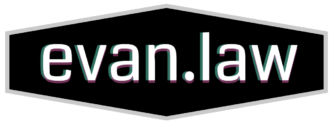Viacom’s lawsuit against YouTube has gotten quite a bit of attention, but it wasn’t the first case of its kind filed. Almost a year ago, helicopter pilot and journalist Robert Tur sued YouTube for infringement of some well-known video he shot during the Rodney King Riots.
Both parties filed motions for summary judgment, and last week the court denied both motions. The rulings shed some light on how the safe harbor provisions of the Digital Millennium Copyright Act (“DMCA”) may play out in future lawsuits over user-generated content.
YouTube argued in its motion that it qualified for safe harbor protection “based on what it purport[ed] to be its definitive ability to satisfy all of the requirements of the statutory scheme.” The court neatly parsed seven requirements from 17 U.S.C. §512 that a service provider must meet to sail into the safe harbor:
(1) adoption and reasonable implementation of a termination policy for subscribers and account holders who are repeat infringers;
(2) accommodation and non-interference with “standard technical measures” that copyright owners use to protect their works;
(3) infringement is “by reason of the storage at the direction of a user of material that resides on a system or network controlled or operated by or for the service provider”;
(4) lack of actual knowledge of the infringing material or no awareness of facts or circumstances from which infringing activity is apparent on the system or network, and expeditious action to remove or disable access to material upon obtaining such knowledge or awareness;
(5) no “financial benefit” directly attributable to the infringing activity,” if it had “the right and ability to control such activity”;
(6) expeditious response to remove or disable access to infringing material upon notification from the copyright owner; and
(7) proper designation of an agent to receive such notification.
The difficulty arose for YouTube under the fifth point, namely, in connection with its argument that it gained no “financial benefit” directly attributable to the infringing activity,” and did not have “the right and ability to control such activity.”
Citing to the recent 9th Circuit case of Perfect 10 v. CCBill, the court observed that this point is actually two requirements in one: a provider’s receipt of a financial benefit is only implicated where it also has the right and ability to control the infringing activity. So if YouTube did not have the right and ability to control the alleged infringing activity, there was no reason to engage in the “financial benefit” analysis.
The court held that there was insufficient evidence to allow it to determine whether YouTube had the right and ability to control the infringing activity. The court’s comments on this point are intriguing, and foreshadow what might be some interesting issues in discovery. “There is clearly a significant amount of maintenance and management that YouTube exerts over its website, but the nature and extent of that management is unclear.” The court went on to note the lack of evidence as to “the process undertaken by YouTube from the time a user submits a video clip to the point of display on the YouTube website.”
Tur v. YouTube, Inc., No. 06-4436, (C.D.Cal. June 20, 2007)
